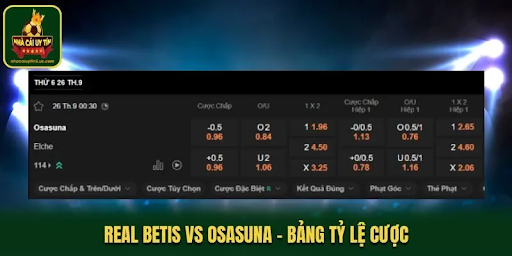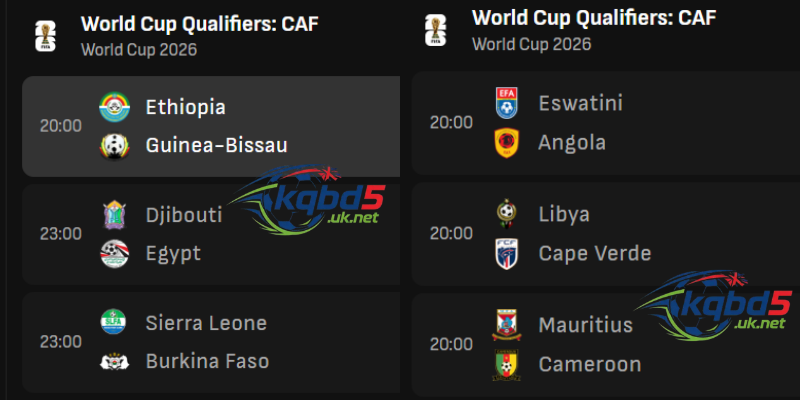Football Odds Analysis 2025 — A Data-Driven Playbook for Confident Football Odds Analysis

Modern football betting isn’t a guessing game—it’s the craft of translating probabilities into consistent choices. Soi kèo bóng đá in 2025 blends statistical thinking, live-match context, and clear bankroll rules. When your workflow is anchored in accurate markets and transparent settlement from a nha cai uy tin, you replace impulse with a repeatable edge. Use this guide as a practical routine: short steps you can execute before, during, and after every match.
1) Odds Are Market Prices, Not Prophecies
Every price is a snapshot of crowd expectation at a moment in time. Treat odds as “what the market currently believes,” not as a promise of what will happen.
- Asian Handicap: Encodes the gap in team strength (0, 0.25, 0.5, 0.75, 1.0…), distributing outcomes into win/half-win/half-loss paths.
- 1X2 (Match Result): A pure outcome lens—home win, draw, away win—great when you value macro match narratives.
- Totals (Over/Under): Driven by chance creation, finishing quality, pace, and game state triggers.
- Specials (cards, corners, halves, in-play props): Micro-markets that reward niche knowledge and live reading.
Convert prices into implied probabilities. When your estimate is meaningfully higher than the market’s, you’ve found a potential entry; if not, pass.
2) The Three-Phase Framework for Football Odds Analysis
A disciplined bettor works in phases to reduce noise and protect capital.
Phase A — Before Kickoff (Preparation)
- Context scan: Schedule congestion, travel distance, altitude, weather.
- Team news: Likely XI, suspensions, fitness minutes, positional cover.
- Opening vs current lines: Note the first handicap and track moves—sudden shifts usually pair with verified information.
- Choose your lane: Handicap when modeling a strength gap, 1X2 for outcome conviction, Totals for tempo expectations.
- Define entries: “If price hits X, I stake Y units.” Pre-commitment beats adrenaline.
Phase B — In-Play (Observation With Rules)
- Reality check: Do possession zones, shot quality, and pressing volumes match the plan?
- Triggers to act: A red card, formation swap, or clear field-tilt may justify small, pre-defined adjustments.
- No chasing: If the match state invalidates your edge, reduce or exit. A disciplined scratch is a win for your process.
Phase C — After the Final Whistle (Review)
- Save the tape: Entry price, closing price, final stats, timeline of key events.
- Explain the gap: Was your read off because of wrong data, late team news, or rare variance?
- Update rules: Turn lessons into checklist items so you don’t pay twice for the same insight.

3) Why Lines Move — The Five Drivers
- Form & freshness: Congested calendars suppress pressing and reduce high-quality chances.
- Squad changes: Losing a ball-progressor, set-piece specialist, or shot-stopper changes expected goals for/against.
- Environment: Heavy rain, heat, and poor turf shift totals more than reputation does.
- Motivation: Promotion pushes, relegation battles, and cup knockout incentives harden defensive shapes.
- Order flow: Large volumes on one side nudge prices—your job is to know why, not to follow blindly.
4) A Five-Minute Checklist You Can Repeat
Before any stake, run this quick audit:
- Competition stage, objectives, and fatigue cycles noted.
- Confirmed lineup checked 30–60 minutes pre-kickoff.
- Weather and pitch speed reviewed.
- Opening line vs current line recorded.
- Market chosen (Handicap / 1X2 / Totals).
- Entry price, maximum risk per bet, and exit conditions written.
- Post-match note template ready.
Consistency here turns Soi kèo bóng đá into a controlled routine instead of an emotional sprint.

5) The 7-Step Analytical Loop
- Define context (home/away, recent trend, tactical identity).
- Quantify strength (xG for/against, conversion rate, set-piece threat, keeper shot-stopping).
- Read openers (handicap & totals + implied probabilities).
- Track moves (time-stamped—did they align with news?).
- Add qualitative cues (motivation, weather, matchup specifics like pace vs deep block).
- Execute (only when price meets your edge & risk parameters).
- Review (log CLV—did your entry beat the closing line?).
CLV (closing-line value) is your health check; beating it frequently suggests your reads are sharper than average.
6) Bankroll: The Non-Negotiable Backbone
Even great reads fail without risk rules. Treat bankroll like oxygen.
- Units, not feelings: Stake 1–3% per decision. Fix a unit size and keep it stable.
- Exposure caps: Daily limit in units—hit it (win or lose), you’re done.
- Confidence weighting: A small tilt for higher-quality edges is fine, but never exceed your cap.
- No martingale, no tilt: Protect against streak psychology; variance is natural.
This is the safety culture you’ll also see reinforced by any reputable nha cai uy tin.
7) Weekly Rhythm for Busy Calendars
- Day −2: Aggregate last 5–10 matches, travel logs, injuries, and likely rotations.
- Day −1: Shortlist markets; note openers; draft provisional entries.
- Matchday AM: Monitor verified news; confirm whether moves have cause.
- T−60’ to T−30’: Lock lineups; execute or stand down.
- Post-match: Journal outcomes, CLV, and a one-line lesson.
Routines reduce decision fatigue and make edges repeatable.
8) Reading the Game State Like an Analyst
Go beyond raw possession. Focus on where possession lives and how chances are built.
- Field tilt: Sustained final-third occupation without counters the other way.
- Shot quality: A few big chances outweigh a pile of low-xG shots.
- Set-piece leverage: Some fixtures hinge on corners and dead-balls; totals and handicaps bend with them.
- Keeper delta: Shot-stopping above/below average can swing expected totals and sides.
Map these to your chosen market: pressure waves boost Overs; sterile possession can validate Unders; structural mismatches justify a handicap stance.
9) Common Pitfalls (And How to Dodge Them)
- Entering because the line moved, not because you know why.
- Leaning on league tables without recent form and injury context.
- Ignoring weather and pitch speed.
- Abandoning bankroll rules after a short losing run.
- Emotional stakes on favorite teams.
- Treating first-half and full-time markets as identical.
- Drawing conclusions from <5-match samples.
- Not keeping a log—no data, no improvement.
Your checklist is the antidote to all eight.
10) The Role of a Trusted Platform
Accurate markets, clear settlement, robust records, and responsible-play tools are baseline requirements. Choose a nha cai uy tin that provides:
- Up-to-the-minute pricing and market depth.
- Transparent rules pages with examples.
- Downloadable bet histories and clear settlement timelines.
- Account controls (deposit limits, cooldowns, self-exclusion).
Infrastructure quality doesn’t win bets for you—but it protects your decisions and your data.
11) A One-Page Routine You Can Print
- Bankroll = 50+ units; stake 1–3% per bet; daily exposure cap.
- Five-minute checklist before every decision.
- Only stake when your implied probability edge is real and recorded.
- In-play: act only on predefined triggers; never chase.
- Log result, CLV, and one lesson per bet; monthly audit your strengths.
- Place wagers only with a verifiably reliable nha cai uy tin.
Conclusion
Soi kèo bóng đá is the disciplined reading of probabilities, not a search for certainty. When you pair odds literacy with a pre-match checklist, live rules, and firm bankroll boundaries—and you execute inside transparent markets—you move from “hoping to be right today” to “being consistent this season.” Every price tells a story; read it with structure, act with restraint, and let your logbook turn experience into edge.


